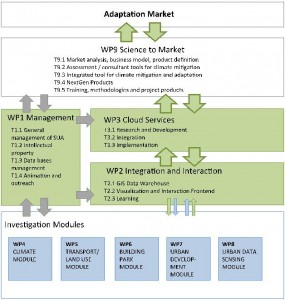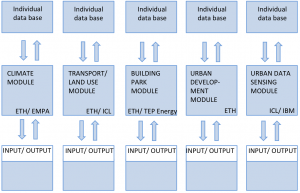Helping cities transition to a low carbon future
Cities are directly contributing to climate change on several levels (e.g. land change, emissions, heat island). Since it is predicted that societies are continuing to urbanize the related provisioning effects to climate change are accordingly increasing. Until now the majority of scenario goals, which had been defined twenty years ago have not been met or are likely to not to be met. Thus, formerly defined hard targets have been simply redefined while governments have invested significant measures in the form of subsidies or development programs. Traditionally, mitigation scenarios rely on technological progress and access to more climate friendly energies, while the drastic pace of change of the emerging countries into highly urbanized societies has been underestimated along with their underestimated needs for resources. In this context European cities and regions could have been an ideal environment for the successful implementation of climate change mitigating strategies in order to compensate and to act as a worldwide role model. Instead, they suffer both on periodical economic crises, climate change, and may suffer from a premature shift of energy sources. Furthermore, existing policies and economic constraints that define urban investment decisions are often not aligned with politically desired development paths. Effects of changes in policies for low-carbon urban development are difficult to assess, not least since assessment methods for climate, transport, economy, land use, and urban design are not yet interconnected to reflect real-life interdependencies. Mechanisms are needed that can provide significant insights on how to adapt urban development paths to approach successfully initial climate change goals.
Fig.: Diagram of the structure of the project.
In order to address these issues effectively, the SUA project aims to create an innovative portfolio of assessment tools and procedures to use urban climate related information. The portfolio will be mainly available for administrative, but also financial, infrastructure and construction sectors, and can be used in various areas of the world in order to create new business opportunities. Key technology-providing European ICT industries are partners of the project in order to obtain a realistic formulation of needs and products. SMEs, such as spin-offs of ETH and ICL, will develop generic as well as specific climate-sensitive urban system simulation and assessment software that can be used by a variety of urban-sector users. They will help local and regional authorities to design climate change related long-term plans for mitigating climate change or adapting development paths. In science the use of specialized disconnected simulation and development models can be observed (figure above), which make it hard to easily apply a particular model to a different location. Prognostic and participatory tools need to be found, improved and interlinked in order to reach defined climate mitigation goals and to implement technologies to control and to adapt development paths. Ideally, insights from each now separated module should provide added value mutually within each other, which can result in more comprehensive model calibration or data exchange or in more in-depth scenario and development path evaluation. The products that will be developed within SUA will add value to the existing climate change mitigation scenarios and support to adapt urban development paths towards a compliance with set scenario goals that have been arranged in national, European or international context for the 21st century.
Fig.: Disconnected state-of-the-art simulation models from ICL, ETH, IBM.


